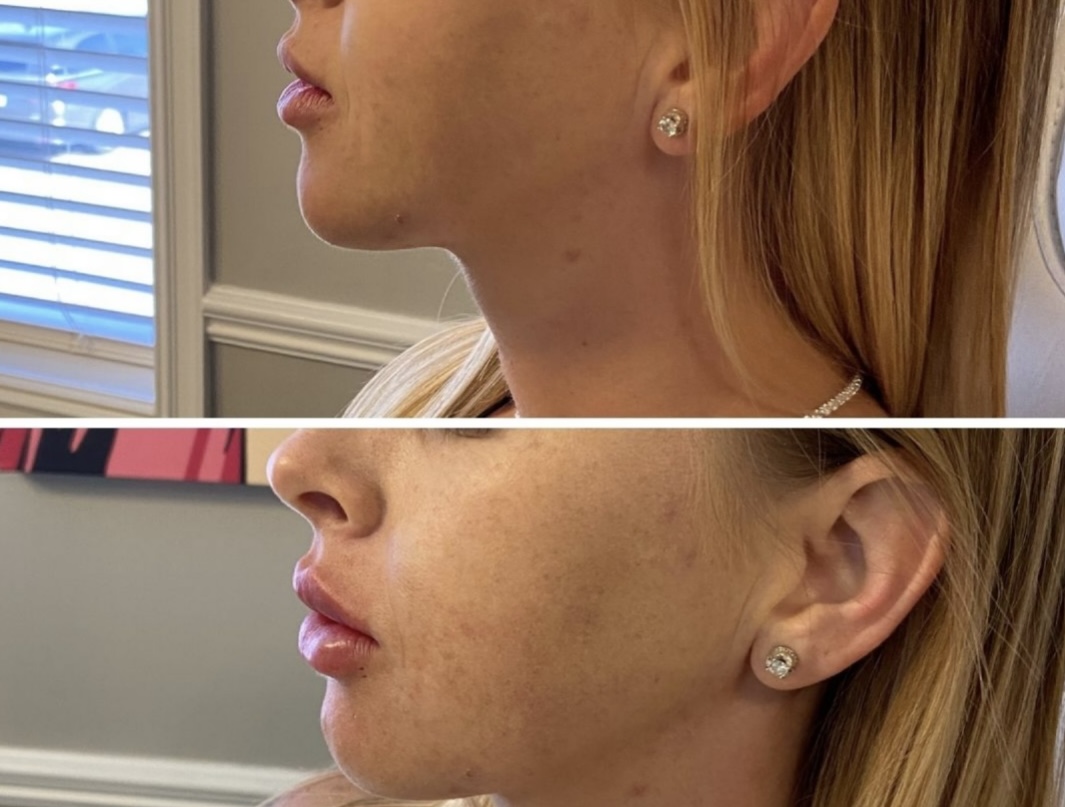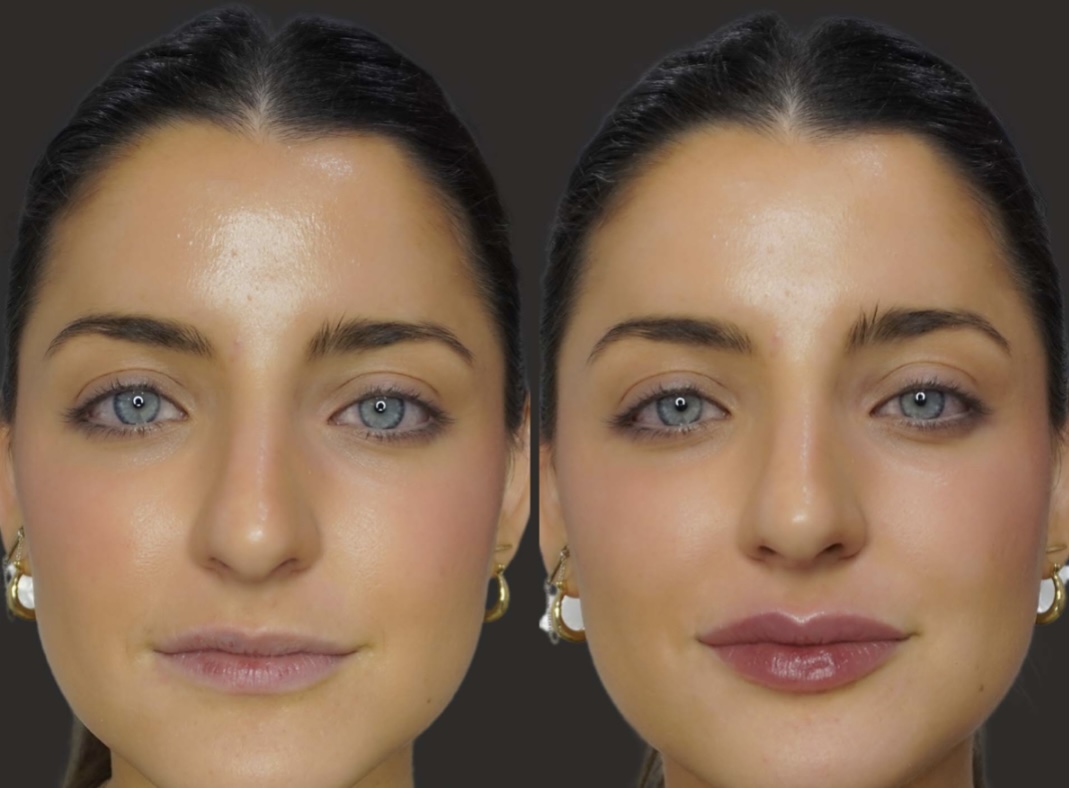As a girl, everyone wants to have plump, attractive lips. However, when winter comes, many people always experience dry, chapped, and peeling lips. This can make you lack confidence when communicating and can make it difficult to apply makeup. If you’re confused about having chapped lips even when it’s not winter, you’re not alone. So, how do you fix dry, chapped lips? We have compiled all the information you need in the article below.

WHAT CAUSES CHAPPED LIPS
Chapped lips, a common condition that can be both uncomfortable and unsightly, can be caused by various factors. One primary cause is environmental conditions, with weather playing a significant role. Exposure to harsh climates, particularly cold and windy weather, can strip the skin of its natural moisture, leading to dry and chapped lips. In contrast, excessive sun exposure can also contribute to chapping by causing dehydration and damage to the delicate skin on the lips.
Another factor contributing to chapped lips is a lack of hydration. Insufficient water intake can result in overall dehydration, affecting the moisture levels in the body, including the lips. Keep in mind that stay adequately hydrated to maintain the suppleness and health of the skin, preventing it from becoming dry and prone to chapping.
Certain lifestyle habits can exacerbate the problem. Breathing through the mouth, particularly during sleep, can lead to increased moisture loss from the lips, contributing to dryness. Additionally, habitual licking of the lips might seem like a quick fix, but the enzymes in saliva can actually worsen the situation, as they break down the protective barrier of the lips, leaving them more susceptible to dryness and chapping.
Moreover, underlying health conditions may play a role in causing chapped lips. Conditions such as vitamin deficiencies, allergic reactions, or skin disorders can impact the health of the skin, including that of the lips. Addressing these underlying issues is essential for effective long-term management of chapped lips.
CHAPPED LIPS SYMPTOMS
Indications of chapped lips encompass:
- Dryness
- Cracks, peeling, or flaking
- Bleeding
- Redness
- Burning, stinging, tingling, or itchiness
- Swelling
- Ulcers or sores inside your mouth and/or on your lips
- Scaly texture
- Numbness
NATURAL REMEDIES FOR DRY LIPS
COCONUT OIL FOR HYDRATION
Indulge your lips in the goodness of pure coconut oil for instant hydration. This natural remedy not only moisturizes your lips but also contributes to the overall health of your skin. The medium-chain fatty acids (MCFAs) present in coconut oil make it easy for your skin to absorb, leaving your lips feeling nourished. Additionally, coconut oil aids in the absorption of vitamin E, a crucial antioxidant that helps combat cell-damaging free radicals, promoting the well-being of your skin.
ALOE VERA FOR SOOTHING
Experience the soothing benefits of fresh aloe vera gel by applying it to your lips. Aloe vera possesses natural anti-inflammatory properties that work wonders in calming your skin and alleviating any stinging sensations. By incorporating aloe vera into your lip care routine, you provide gentle relief to sore or tender lips, promoting a sense of comfort.
ROSE WATER AND HONEY FOR NOURISHMENT
Elevate your lip care routine with a blend of honey and rose water. Mix these natural ingredients and generously apply the mixture to your lips, leaving it on for approximately 15 minutes before rinsing off. This delightful combination not only helps prevent cracking but also provides deep moisturization. Honey, known for its hydrating properties, teams up with the soothing essence of rose water to keep your lips soft, supple, and thoroughly nourished.
TREATMENT FOR CHAPPED LIPS
STAY HYDRATED
Ensuring you drink an adequate amount of water each day is not only beneficial for your overall health but also plays a crucial role in preventing dehydration, a common culprit behind chapped lips. When your body lacks sufficient hydration, your lips may lose moisture, leading to dryness and discomfort. To maintain the health and happiness of your lips, it’s essential to prioritize hydration by consuming ample water throughout the day. Aim for the recommended daily intake to not only keep your entire body well-hydrated but also to safeguard against the development of chapped lips, promoting a soft and supple feel.
USE A HUMIDIFIER
The air inside our homes can become quite dry, especially when it’s winter. But here’s a simple trick to help – use a humidifier. This clever machine puts more moisture into the air, and that’s really good for your lips and skin.
It’s a good idea to have a humidifier both at your workplace and home. Turn it on at night when you go to sleep. This way, while you’re resting, your skin gets an extra boost of moisture. It’s like a little helper making sure your skin stays nice and hydrated.
USE LIP BALM
For the best treatment for chapped lips, it’s essential to incorporate lip balm into your daily routine. This not only safeguards your delicate lip skin from changing weather conditions but also ensures consistent moisture. Opt for a lip balm with abundant emollients, focusing on ingredients like petrolatum to retain moisture and dimethicone to effectively seal off cracks in dry lips. Don’t limit yourself to products specifically labeled as “balm”; lip ointments are equally effective. Additionally, when exposed to the sun, prioritize a lip balm with SPF protection for optimal care. Remember, the best treatment for chapped lips starts with regular use of a quality lip balm.
AVOID LICKING YOUR LIPS
It’s important to resist the temptation to lick your lips, even if it feels like a quick solution. Surprisingly, licking your lips can make them even drier. When the moisture from your saliva dries up, it ends up taking away the moisture your skin needs to stay soft.
Instead of relying on licking, opt for a trusty lip balm. Lip balm acts like a protective shield for your lips, helping to lock in moisture and prevent dryness. By using lip balm, you provide your lips with the hydration they need to stay smooth and comfortable. So, the next time your lips feel dry, reach for your favorite lip balm to give them the care and attention they deserve.
WATCH OUT FOR METAL AND NON-FOODS
It’s a good idea to be careful with what you put near your lips, like pens and jewelry. These things that aren’t meant for your lips can cause irritation, making your lips uncomfortable. So, it’s better to keep them away.
Stick to using lip balm for your lips. Lip balm is made specifically for your lips, and it helps to keep them moisturized and feeling good. By avoiding things that aren’t meant for your lips, like pens and jewelry, and choosing lip balm instead, you ensure that your lips stay happy and irritation-free. So, remember to be mindful of what comes close to your lips and give them the care they deserve with lip balm.
HOW TO CHOOSE THE BEST LIP BALM
Choosing the best lip balm for chapped lips involves considering various factors to ensure effective relief and long-lasting hydration. It’s essential to look for a lip balm that addresses specific needs and preferences.
Hydrating Ingredients: Opt for a lip balm enriched with hydrating ingredients such as beeswax, shea butter, or hyaluronic acid. These components help lock in moisture, preventing further dryness and promoting smooth, supple lips.
Avoid Harsh Chemicals: When selecting a lip balm, steer clear of products containing harsh chemicals like parabens, sulfates, and artificial fragrances. These can potentially irritate sensitive lips and exacerbate chapping.
SPF Protection: For comprehensive lip care, especially when spending time outdoors, choose a lip balm with SPF protection. Sun exposure can contribute to lip dryness, and SPF helps shield your lips from harmful UV rays, preventing further damage.
Consider Your Preferences: Consider the texture and finish you prefer in a lip balm. Some people prefer a thicker, more occlusive balm for intense moisture, while others may opt for a lighter, glossier formula. Personal preferences play a significant role in finding the best lip balm that suits your needs and lifestyle.
Brand Reputation: Explore reputable brands with a track record of producing effective lip care products. Reviews and recommendations from other users can provide valuable insights into the performance and quality of a particular lip balm.
WHEN TO SEE DOCTOR
If your lips stay chapped for a long time, it’s important to see a doctor. Even if you use lip balm regularly, persistent chapping might mean there’s a bigger issue, like an infection or a more serious problem such as cancer or a condition called actinic cheilitis.
Chronic chapped lips could also be a sign of:
- A type of cheilitis caused by an infection, and your doctor might suggest taking a small piece for testing.
- Angular cheilitis, linked to some autoimmune disorders, and your doctor might want to do a blood test.
- An allergic reaction, and your doctor might recommend allergy testing.
- Not getting enough nutrients, and your doctor might use a blood test to check.
If you’re treating your chapped lips but they’re not getting better or if they get worse, it’s crucial to talk to your doctor, especially if it lasts for more than a few weeks.
FAQ
1. Can Vaseline heal chapped lips?
Yes. Choosing Vaseline® Jelly is a great option because it creates a protective layer on your lips and goes deep into the skin to add moisture.
2. Is it better to put Vaseline on wet or dry lips?
It’s generally better to apply Vaseline on damp or wet lips as it helps seal in moisture, providing a more effective barrier against dryness.
3. How do you heal chapped lips fast?
To heal chapped lips quickly, regularly apply a moisturizing lip balm with ingredients like beeswax or shea butter, drink plenty of water to stay hydrated, and avoid licking your lips.
CONCLUSION
In summary, following the dermatologist’s advice for healing chapped lips involves consistent use of a quality lip balm, staying well-hydrated, and avoiding habits like licking your lips. If the issue persists, seeking professional help from a dermatologist is recommended for personalized guidance and further assistance.





